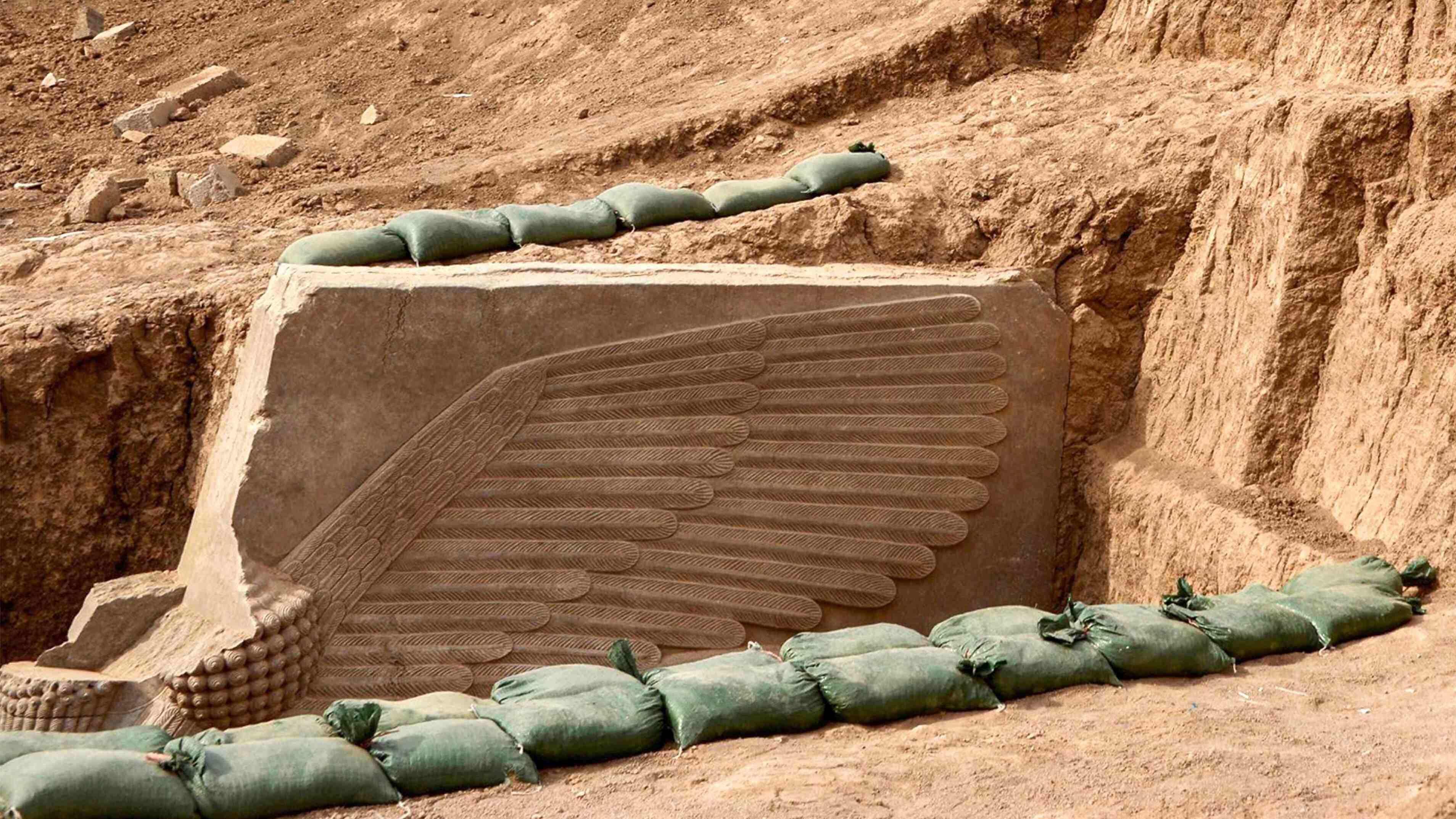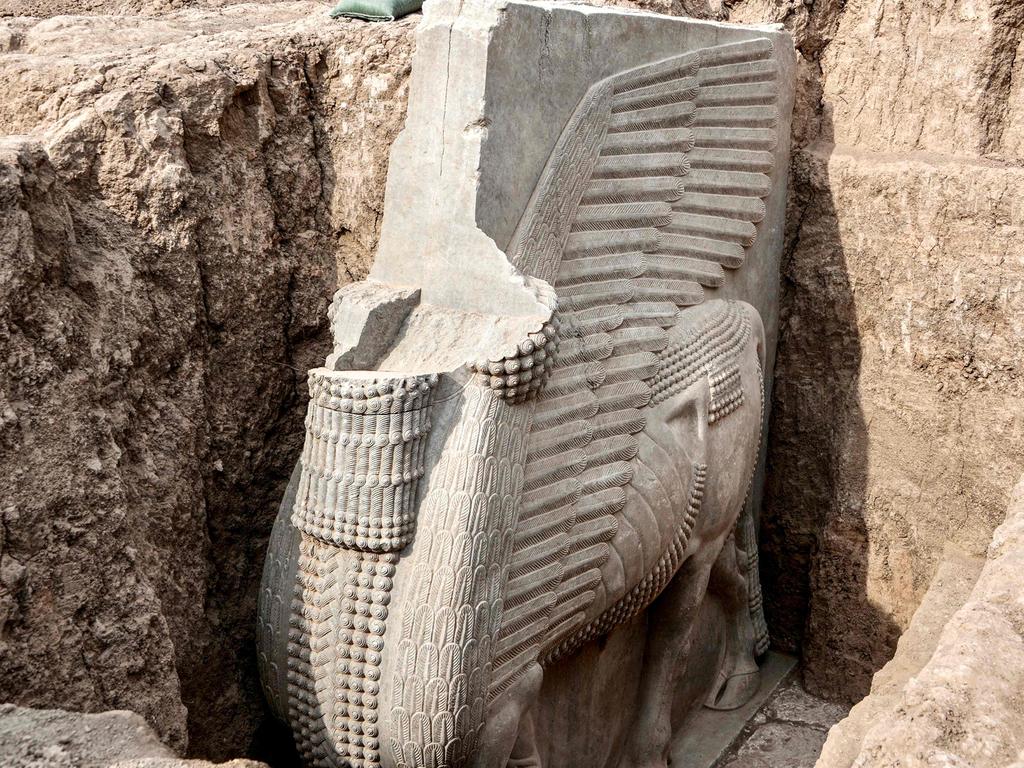An ancient lamassu was excavated after it was buried in Iraq, officials said. Mustafa Yahya and Alaa Thamer via Iraq’s General Authority for Antiquities and Heritage

More than 2,700 years ago, Assyrian king Sargon II ordered the construction of his own city in what is now Iraq.
Known as Dur Sharrukin, or modern day Khorsabad, the sprawling capital city was meticulously planned and fortified with outer walls broken up with seven gates, according to Britannica. Some of the gates were adorned with massive winged statues.

One such statue, known as a lamassu, was excavated by archaeologists in 1992. In 1995, its head was stolen, and to prevent further damage, officials reburied the figure, according to an Oct. 24 Facebook post from Iraq’s General Authority for Antiquities and Heritage.

That is until now.
A team of archaeologists recently uncovered the lamassu — again — bringing it out of its underground hiding place for the first time in nearly 30 years, officials said.

The monument was a part of one of the gates surrounding the ancient city of Dur Sharrukin, according to experts. Mustafa Yahya and Alaa Thamer via Iraq’s General Authority for Antiquities and Heritage
Lamassu served as a display of ancient kings’ power and was often part of city gates or placed outside of other important sites, according to Britannica. The statues depicted the head of a human with a beard on the body of a bull or lion with wings.
The monuments were carved by artisans from stone and could weigh 40 tons or more, experts said.
Khorsabad is in north Iraq about 290 miles north of Baghdad.
